Soothe Your Spirit With a Buddha in the Garden
Gardens are easy on the eyes — and the mind. Just gazing upon a well-designed bed can be soothing and restorative. So it’s not surprising that statues of Buddha, who epitomizes tranquility and serenity, have a place in today’s landscapes. You’ll find these inspiring figures nestled in lush greenery or surrounded by flowers, resting on a bed of rocks or sand in a Zen space, or overseeing a pool or water feature.
Buddha statues come in many poses, all illustrating the life of this holy man. Each posture has specific hand gestures, called mudras, that have significant meaning. But don’t get overwhelmed: You can choose a statue that signifies something you need in your life (say, serenity), or you can choose one that speaks to you aesthetically.
Any statue you choose must be treated respectfully. Try to avoid putting your Buddha directly on the ground (the figure is often depicted sitting on a platform). And, if possible, locate your statue on a hill or a pedestal — ideally at eye level — to create the appropriate sense of awe.
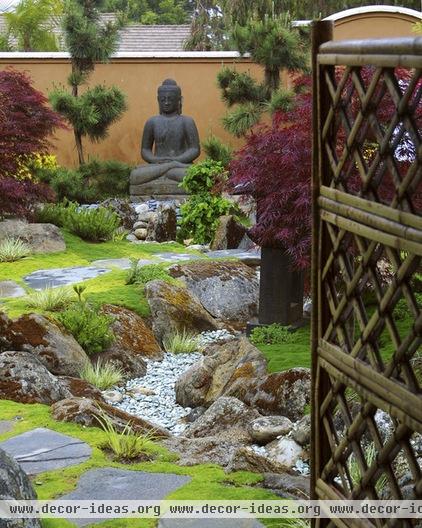
Flanked by two Japanese black pines, this imposing 6-foot Buddha makes an impressive design statement in a Santa Barbara, California, garden. The statue is in a serene meditative position with both hands facing up in the lap. If you can, place a statue like this facing east, as Buddha meditated on the rising sun in his search for enlightenment.
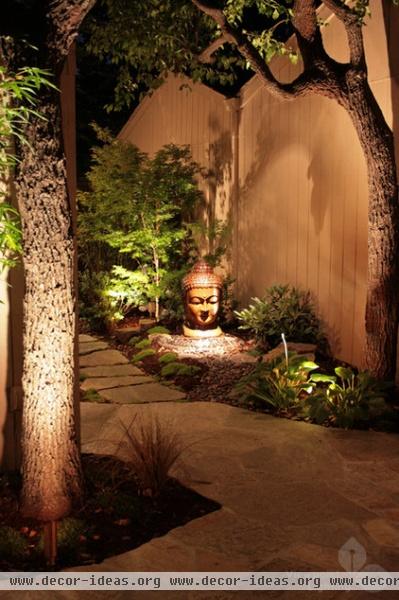
Depictions of Buddha often include only the head, as it is the most important part of his body. Oversize, with a large bump on top that signifies wisdom, the head statues generally have swirls of short, curly hair and a full mouth, symbolizing eloquent speech.
Lit by copper and brass low-voltage halogen fixtures, this statue makes a dramatic focal point.
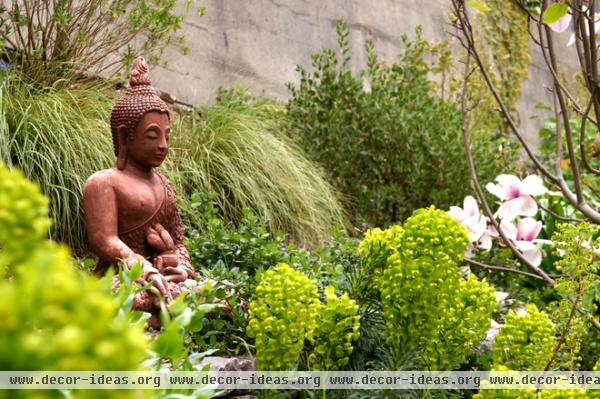
In search of healing for the body or the mind? A so-called Medicine Buddha, like this one, could help. That’s a jar of medicinal herbs in his left hand, while his right hand is resting on his knee in the mudra of blessings, with a stem of a restorative plant between his thumb and forefinger.
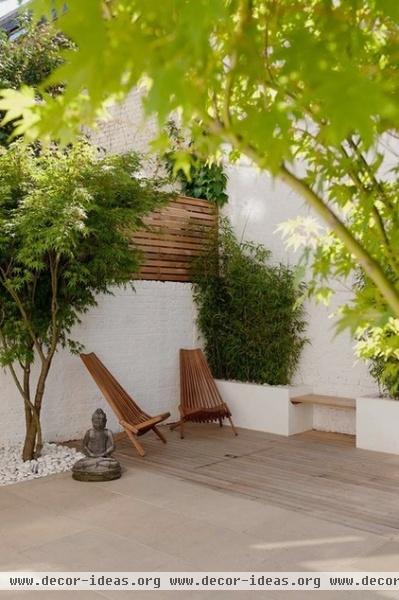
In this beautifully spare London terrace garden, a small seated Buddha adds to the peaceful setting. A slatted cedar trellis provides privacy and matches the cedar decking. Two feathery Japanese maples (Acer palmatum) have been pruned to show off their branch structure.
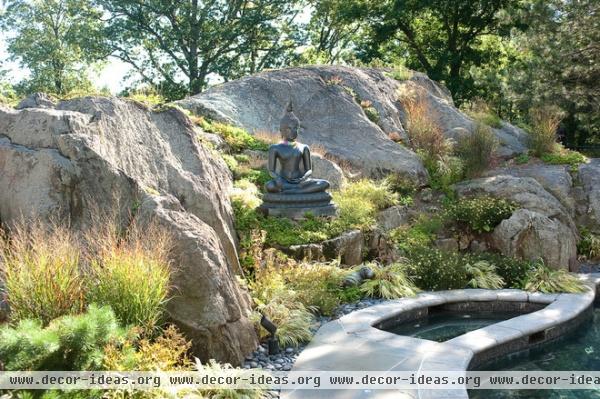
Nestled on this rocky hillside is a so-called Earth Witness Buddha, which shows the holy man sitting in meditation with his left-hand palm upright in his lap and his right hand touching the earth. This represents the moment when Buddha was tempted by a demon but resisted, getting support from the earth, and finally reached enlightenment. It’s perfectly placed (respectfully high on the rocks) and surrounded by all manner of delicate grasses and perennial plants and flowers.
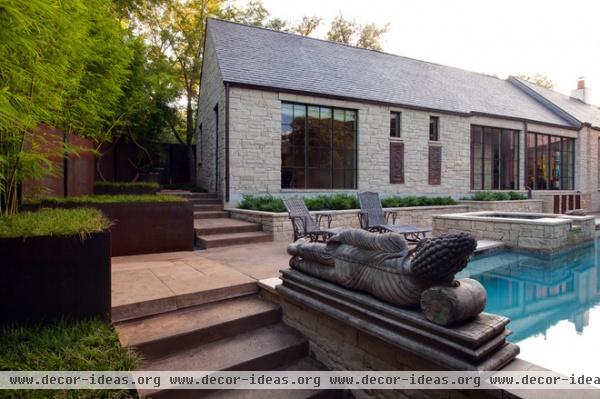
In this modern stone house in Austin, fashioned from gray Texas limestone, a stately reclining Buddha overlooks the water. This relaxed pose relates to a time in Buddha’s life just before he left this world behind and entered into nirvana.
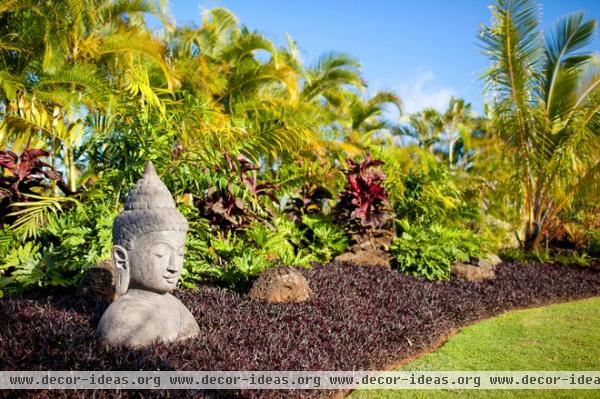
In spectacularly fertile Hawaii, the riotous vegetation is calmed by a bust of Buddha. Note the half-closed eyes, signifying meditation, looking outward and inward. The gorgeous purple ground cover is Hemigraphis ‘Razor’.
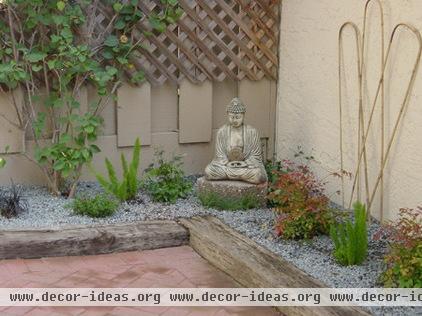
Tranquility is possible even in the smallest of spaces. This small Zen garden, with its simple plants, includes a sitting Buddha with both hands in a meditative pose. The hands overlap each other, with the left hand placed on top of the right so the thumb tips touch to form an oval, symbolizing the turning of attention inward.
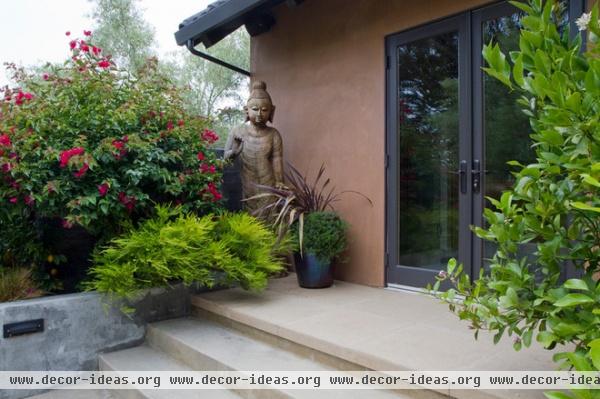
With its right hand raised, this walking Buddha wards off evil and protects from fear at the entryway to a master bedroom. The vivid lime-green plant at the figure’s feet is Coleonema pulchrum ‘Sunset Gold’ (Breath-of-Heaven).
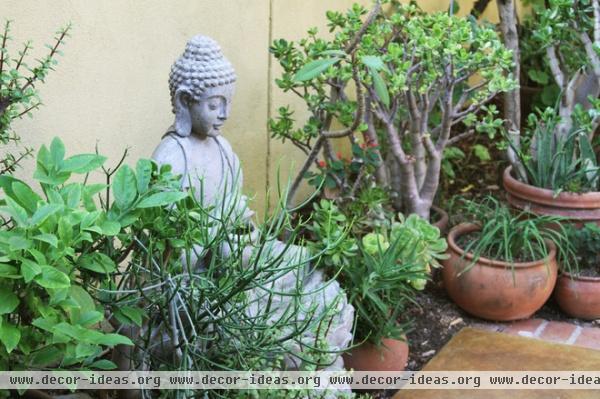
An oasis of calm, this Buddha seems right at home meditating among the potted plants in a Los Angeles garden. Note the signature elongated ears, which signify Buddha’s ability to be all-hearing.
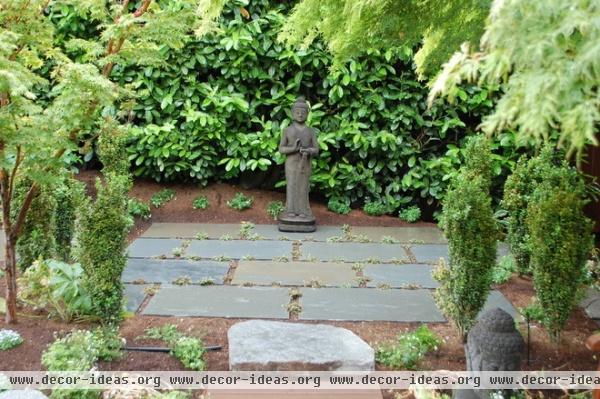
A teaching Buddha presides over this stone patio, part of a larger garden in Seattle. His right hand is raised in the jnana (knowledge or wisdom) mudra. Yogis will recognize this one — it’s when you bring the index finger and thumb tip of each hand together to form a circle.
More: Ornament Your Garden the Artful Way












